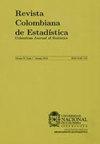对过分散计数数据建模的两个有用的离散分布
Q3 Mathematics
引用次数: 2
摘要
近年来,获得连续分布的离散类似物的方法得到了广泛的研究。一般来说,离散化过程提供的概率质量函数可以与用于计数数据分析的传统模型(泊松分布)相竞争。离散化过程也避免了在分析严格离散数据时使用连续分布。在本文中,我们试图使用无限级数方法和基于生存函数的方法来引入Shanker分布的两个离散类似物,作为对过度分散数据集建模的替代方法。尽管离散化方法之间存在差异,但得到的分布是可互换的。而用无穷级数法生成的分布对于形状、生成函数和中心矩有更简单的数学表达式。在估计和渐近推理问题上考虑了极大似然理论。为了评估所开发方法的某些频特性,进行了仿真研究。使用文献中提供的真实数据集来评估所提出模型的有效性。本文章由计算机程序翻译,如有差异,请以英文原文为准。
Two Useful Discrete Distributions to Model Overdispersed Count Data
The methods to obtain discrete analogues of continuous distributions have been widely considered in recent years. In general, the discretization process provides probability mass functions that can be competitive with the traditional model used in the analysis of count data, the Poisson distribution. The discretization procedure also avoids the use of continuous distribution in the analysis of strictly discrete data. In this paper, we seek to introduce two discrete analogues for the Shanker distribution using the method of the infinite series and the method based on the survival function as alternatives to model overdispersed datasets. Despite the difference between discretization methods, the resulting distributions are interchangeable. However, the distribution generated by the method of infinite series method has simpler mathematical expressions for the shape, the generating functions and the central moments. The maximum likelihood theory is considered for estimation and asymptotic inference concerns. A simulation study is carried out in order to evaluate some frequentist properties of the developed methodology. The usefulness of the proposed models is evaluated using real datasets provided by the literature.
求助全文
通过发布文献求助,成功后即可免费获取论文全文。
去求助
来源期刊

Revista Colombiana De Estadistica
STATISTICS & PROBABILITY-
CiteScore
1.20
自引率
0.00%
发文量
0
审稿时长
>12 weeks
期刊介绍:
The Colombian Journal of Statistics publishes original articles of theoretical, methodological and educational kind in any branch of Statistics. Purely theoretical papers should include illustration of the techniques presented with real data or at least simulation experiments in order to verify the usefulness of the contents presented. Informative articles of high quality methodologies or statistical techniques applied in different fields of knowledge are also considered. Only articles in English language are considered for publication.
The Editorial Committee assumes that the works submitted for evaluation
have not been previously published and are not being given simultaneously for publication elsewhere, and will not be without prior consent of the Committee, unless, as a result of the assessment, decides not publish in the journal. It is further assumed that when the authors deliver a document for publication in the Colombian Journal of Statistics, they know the above conditions and agree with them.
 求助内容:
求助内容: 应助结果提醒方式:
应助结果提醒方式:


